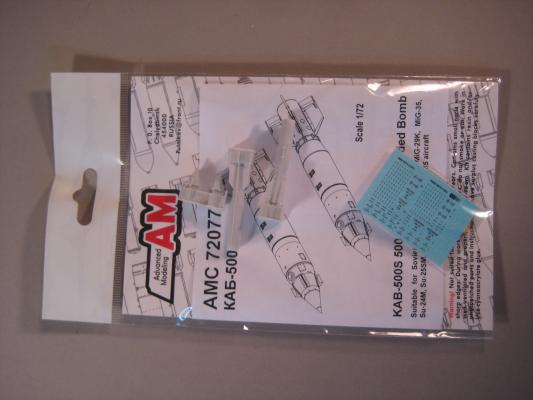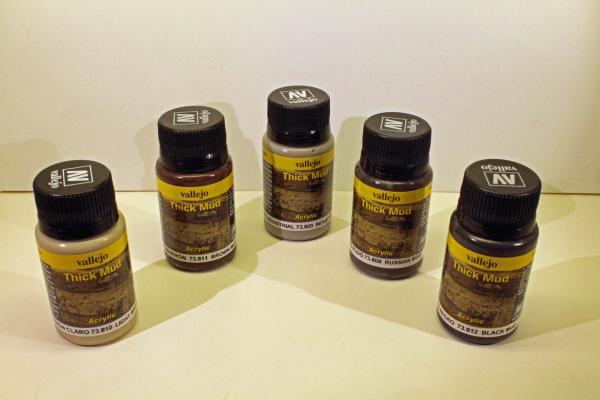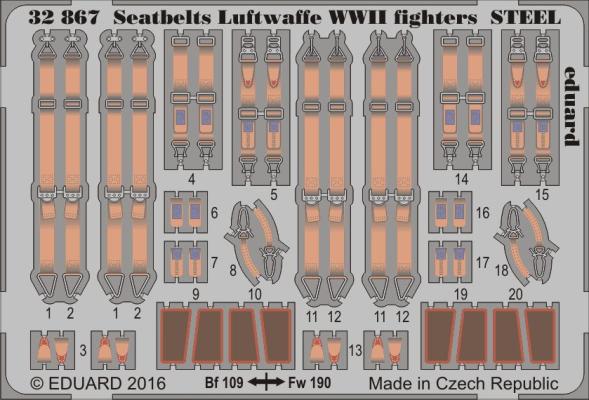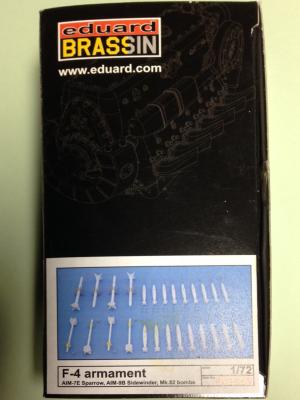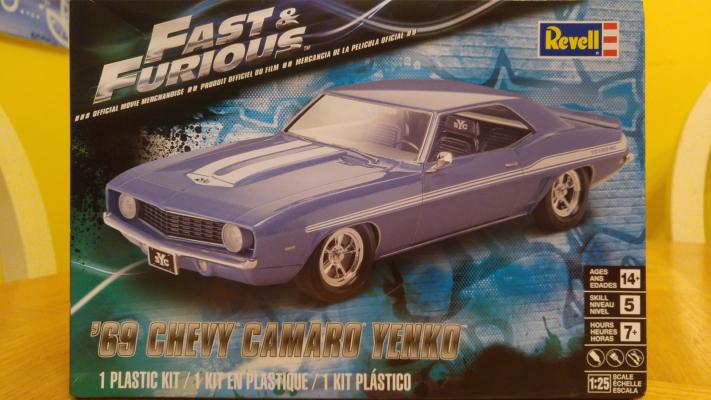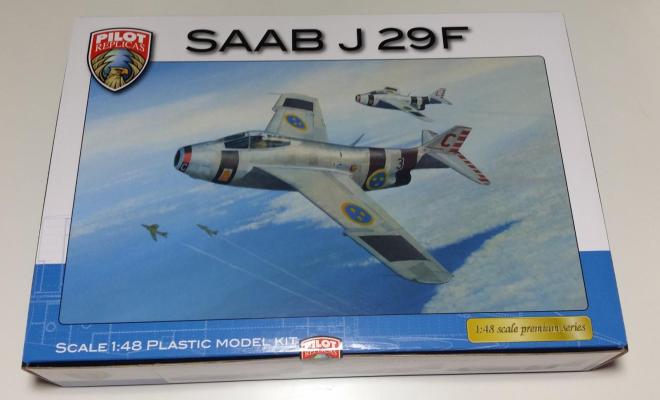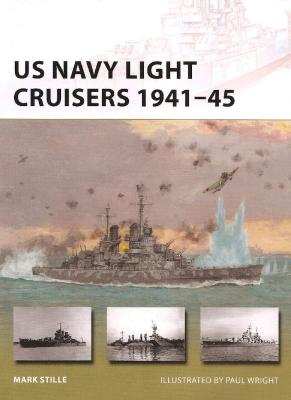The Tomcat has to be one of the most famous aircraft of the Navy. Thanks to movies like ‘Top Gun’ and ‘The Final Countdown’ the shape of the large fighter is ingrained in history. What isn’t as well known is that the cat changed its spots late in its service. No longer the pure fleet fighter, but relegated to the role of fighter bomber. It actually excelled in this role as the F-14D Bombcat. The aircraft was capable of carrying every form of bomb and missile that the Navy had at its disposal. That is where this sheet comes into its own.
Reviews
Underwing armament such as bombs are always nice to add to your model. With the plethora of new Russian aircraft models, the abilities to bomb them up has never been better. The GPS guided bombs are quite well known in the West but the Russian equivalents are not as well known. Advanced Modeling has stepped up to plate with their impressive 3D CAD developed products.
The packaging is a self-sealing bag that contains the parts for two KAB-500S Satellite Bombs . There is a small decal sheet for the bombs. Also included are two end caps in photo etch.
The instructions are beautifully printed and attached to card stock packaging. They are written in Russian and English. The drawings are simply beautiful and extremely accurate. The one sheet shows where the decals go.
All the resin parts are in light grey resin with no blemishes or bubbles anywhere. The bomb bodies are separate from the warheads. The instructions show where to cut off the resin pour stubs.
Trumpeter’s 1/32 A-4E/F Skyhawk has been out since 2012 and while some aftermarket companies have addressed the cockpit and intakes, there have been almost no decals issued to a very familiar kit with lots of marking potential. Enter AOA Decals and Part 1 of their multi-part coverage of the Scooter in USN/USMC markings. The decals are printed by Cartograf. Included in the package are two large full color sheets covering the colorful markings and one gigantic sheet covering the black and white markings. Printing is superb as Cartograf is a leading manufacturer of decals. The instructions are full color and have side profiles in color for all 10 schemes as well as detailed information on each scheme. A full set of stencil instructions are also included.
The marking choices are:
We live in a Golden Age of modeling, we do. It seems that not a day goes by before some new product is offered to plastic modelers. This time around is a new set of excellent diorama weathering effects offered by Vallejo called ‘Thick Mud’. As the name suggests, each of six varieties offered contains a different shaded sludge mixture that looks, acts, and cleans up like mud.
This is the stuff that we have all tried to perfect: using water, paint, pigments, real dirt, fine sand and some kind of fixing agent. Vallejo has simply taken the guesswork out of it for you, but they’ve smartly rendered the concoction in an easy-to-use-and-clean-up acrylic medium.
The set includes the following shades:
Eduard has produced many different sets of seat belts over the years for many sizes and types of aircraft. Hey also have several different style with the fabric belts and straight photoetch belts. This set is 1/32nd scale photoetch steel with pre-printed color on one side. The printing is top notch and even includes the required stitching on the belts. There are enough lap and shoulder belts for four separate seats. The detailed instructions show attachment to Bf-190 and FW-190 variants. I had a spare seat for the Trumpeter Me-262 and used that for this demonstration (after painting it).
The shoulder belts are simple in that there are no attachments necessary so you can cut them loose and attach them. I bent them to shape and glued them in place. Please take note that they are “handed” in respect that there is a left and right.
Earlier this year Eduard released an F-4 Phantom weapons set to complement Academy’s new F-4J kit. The set actually consists of five Eduard Brassin sets: 672030 AIM-7E Sparrow missiles (4); 672036 Aim-9B Sidewinder missiles (4); and three sets of 672087 Mk. 82 bombs (6 in each). As each of these sets has been previously been reviewed, I don’t want to repeat earlier reviews, but I want to mention a few things I encountered in my build.
The Kit
Bronco has recently released a fun little kit of two German WWII rubber rafts, which come in a small, side-opening box with instructions and painting suggestions on the back. Two identical sprues of soft grey plastic make up the contents.
Expecting a run-of-the-mill modeling experience, I was more than pleasantly surprised by the engineering and design of everything – these were made with the modeler in mind. There are enough parts to assemble two rubber rafts. The top and bottom of each raft fit perfectly around a third, curved, inner bottom part to leave a single, very thin seam line around the exterior.
The model I am reviewing here is one of the cars out of the second movie in the Fast & Furious endeavors.
The story began back in 1967 when Chevy introduced its new pony car for the first time, the Camaro. Finally, in 1969, after Don Yenko had tried to convince them to let him build his idea of the ultimate muscle car those first couple of years, Yenko was able to convince the powers that be at Chevrolet to let him produce a special series of cars with enhanced performance characteristics under the GM COPO order program. He was able to purchase 201 of these vehicles. They were built in a factory in Pennsylvania. These specially built performance machines came equipped with a L- 72 427 C.I. big block Chevy powerplant combined with a four speed transmission, along with other performance parts and a deluxe interior unique for the Yenko design. Hence the Yenko SC Camaro was born.
Background
The Saab 29, colloquially called Flygande tunnan (English: "The flying barrel"), was a Swedish fighter designed and manufactured by Saab in the 1940s. It was Sweden's second turbojet-powered combat aircraft, the first being the Saab 21R. Despite its rotund appearance, from which its name derives, the J 29 was a fast and agile aircraft for its era. It served effectively in both fighter and fighter-bomber roles into the 1970s.
The latest New Vanguard naval edition from Osprey covers one of the least well-known class of modern US Navy vessels, the light cruiser. The operational lifetime of the Navy’s light cruisers spanned 50 years, from the commissioning of the USS Omaha in 1923 to the scrapping of the USS Roanoke in 1973. Their heyday occurred between 1941 and 1945. By 1947, most of those that had survived the World War II had been decommissioned. A few soldiered on either as gun platforms during the Korean War, or were adapted to missile platforms during the Cold War.


